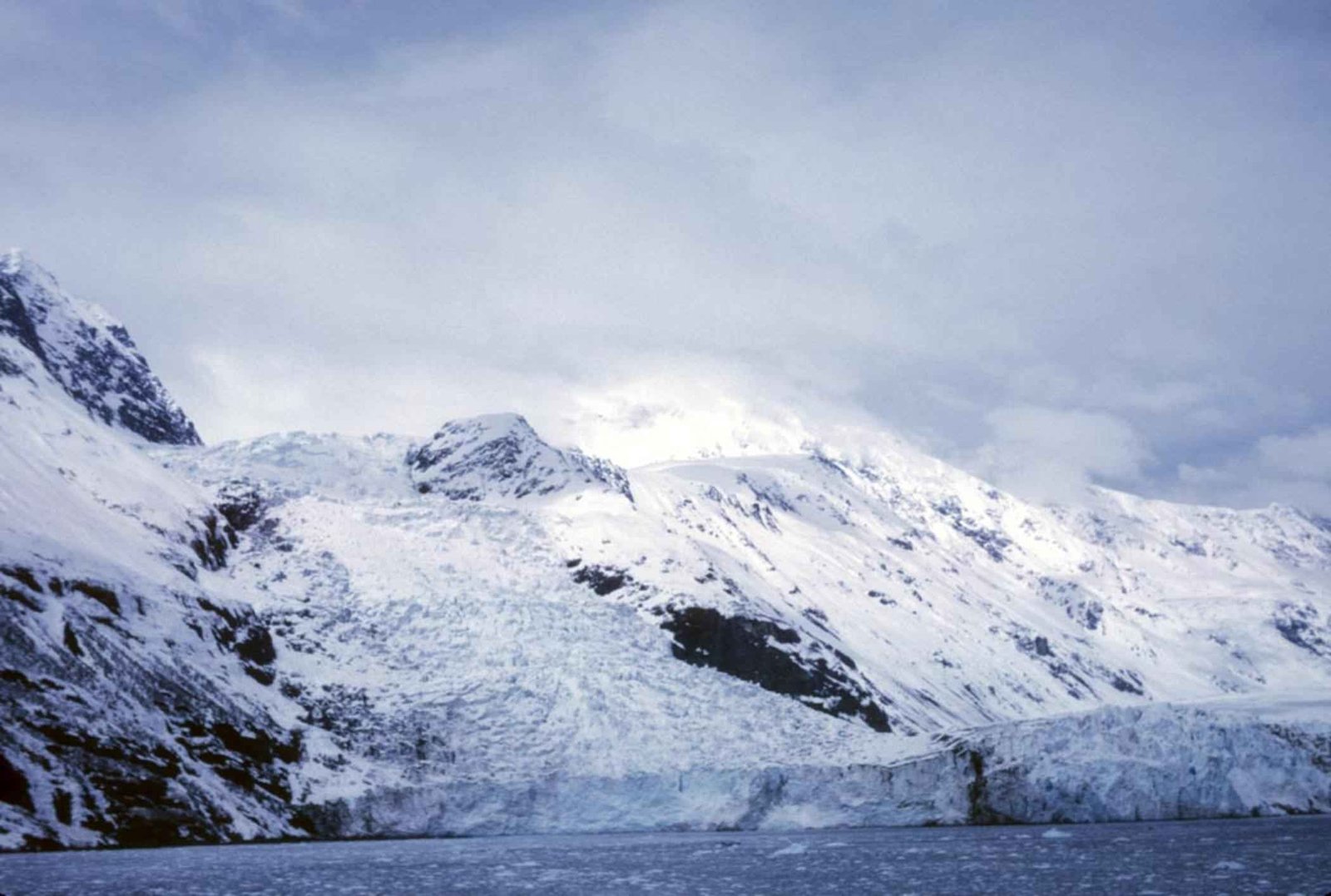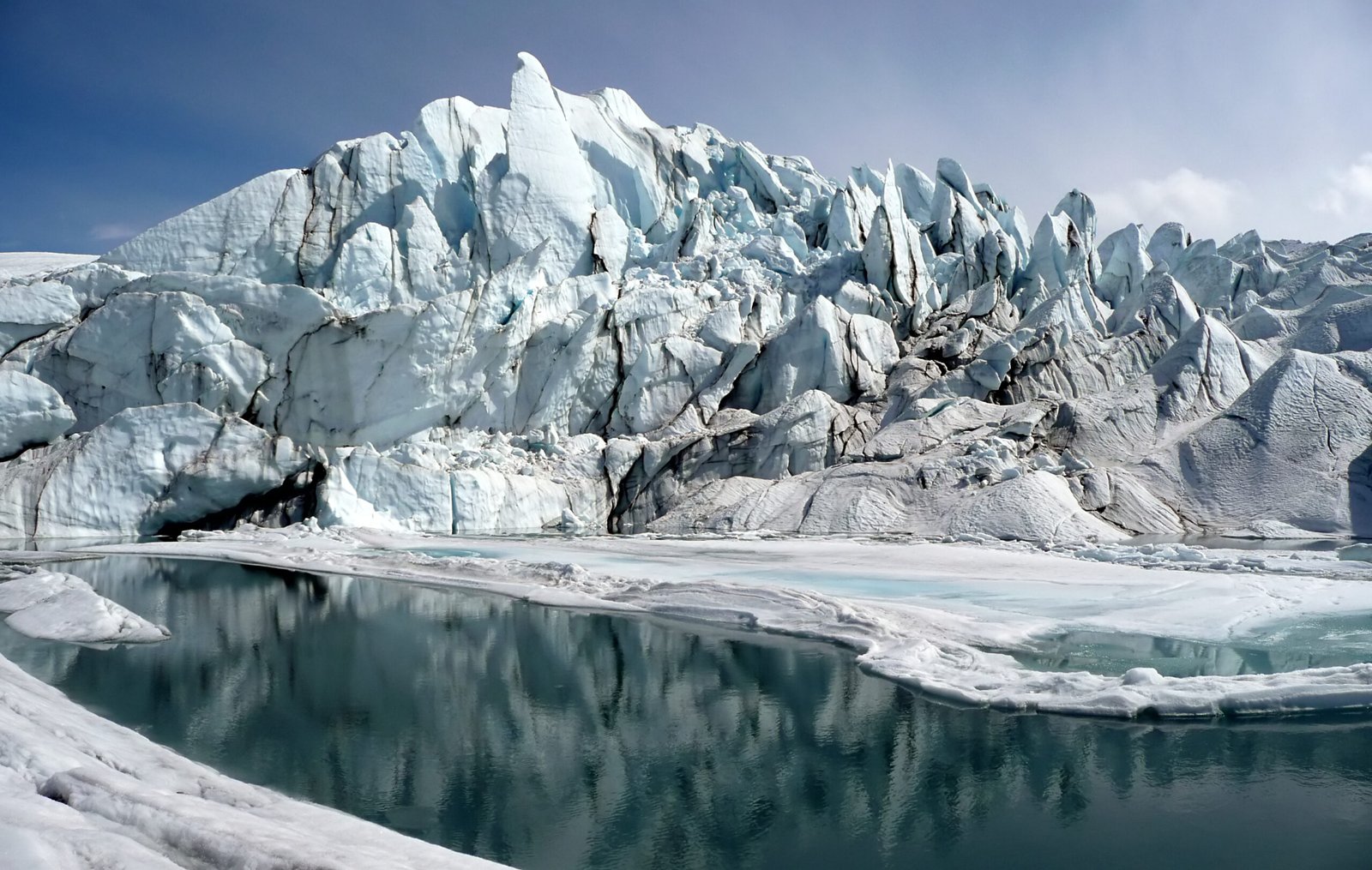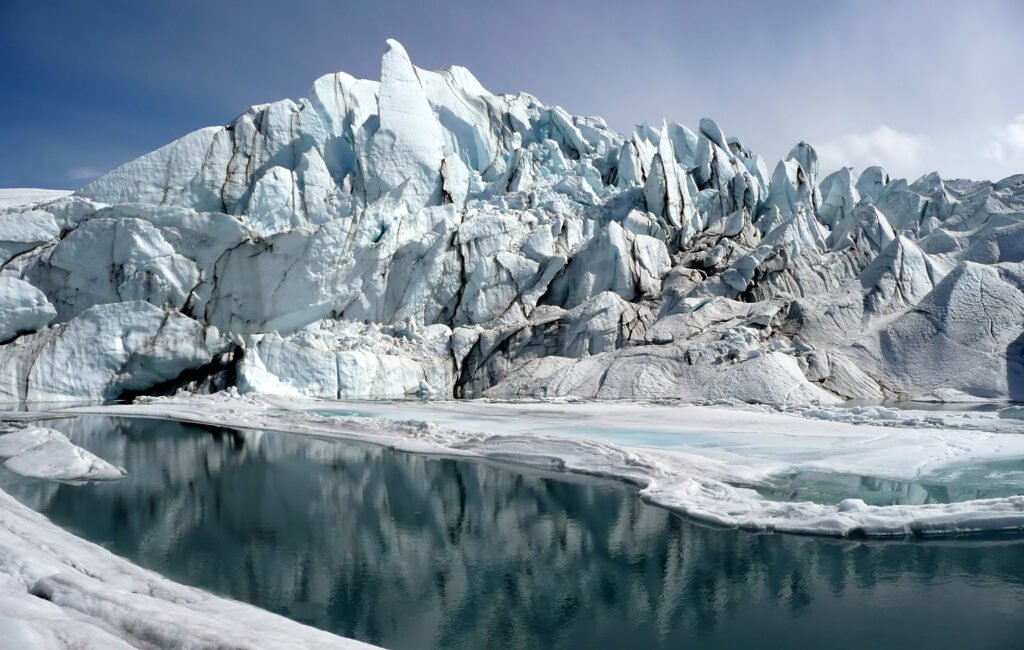Somewhere deep in the wild, icy heart of Alaska, the land itself is alive with a music most humans never hear. Imagine the earth’s coldest symphony: a relentless cacophony of thunderous cracks, low groans, and eerie, haunting melodies echoing off ancient walls of ice. These are not the sounds of mythical monsters or machines, but the glaciers themselves — performing daily, hidden from most ears, in a show wilder than any heavy metal concert. The spectacle is as raw as it is real, played out in a world where silence is broken by the mighty chorus of nature’s coldest performers.
The Living Giants of Ice
Alaska’s glaciers are colossal rivers of ice, some stretching for miles across rugged valleys and mountain slopes. Far from static, these giants are always on the move, inching forward under their own weight, shaping the land in their icy wake. Each glacier is centuries old, made from countless layers of snow compacted over time. They seem still, but under the surface, they are alive with movement and drama. Every shift and slide creates tension and sound, making each glacier a living, breathing force of nature. Just standing near one, you feel the power and ancient history humming beneath your feet.
The Groans and Rumbles: Glacial Tectonics
The deep, rumbling groans that roll out from Alaska’s glaciers are more than just noise; they are the sound of the earth itself flexing and stretching. As glaciers move, the enormous weight causes the ice to crack, shift, and grind against the bedrock below. This process, known as glacial tectonics, can generate sounds that travel for miles through the frozen landscape. Sometimes, these groans are so loud they feel like distant thunder, shaking the air and ground alike. Scientists use sensitive instruments to record and study these sounds, learning more about how glaciers flow and change over time. For those lucky enough to hear them in person, the effect is unforgettable — a natural soundscape both intimidating and awe-inspiring.
Cracks, Pops, and Thunderous Splits
When a glacier cracks, it’s as if the earth is splitting open. These sharp, explosive noises are called “calving events” when large chunks of ice break off the glacier’s edge and crash into the sea or a lake below. The sound is shocking — a sudden, deafening crack followed by a splash that reverberates for miles. Smaller fissures create a constant symphony of pops and snaps, echoing through the icy air. Each crack is a sign of stress and movement, a reminder that these icy behemoths are always changing. Locals and explorers often describe these moments as both terrifying and thrilling, like nature’s own fireworks show in the cold.
The Haunting Songs of Ice

Not all glacier sounds are thunderous. Some are eerily melodic, almost like singing. These strange noises occur when meltwater flows through tunnels and crevasses within the glacier, creating vibrations that ring out in high, haunting tones. In the stillness of a glacial valley, these sounds can seem otherworldly — as if the ice itself is whispering secrets from another time. Scientists sometimes refer to this as the “ice chorus.” For those who experience it, the effect is mesmerizing, almost spiritual, reinforcing the ancient mystery of these frozen landscapes.
Why Glaciers Make Music: The Science Behind the Sound

The sounds of glaciers are the result of complex natural processes. As glaciers move, friction builds up between the ice and the rocky ground beneath. This friction, combined with changing temperatures and the pressure of overlying ice, causes cracks and shifts that create sound waves. Water, both liquid and frozen, adds to the noise, as streams and rivers carve out tunnels inside the glacier. Even the air trapped in ancient ice bubbles can pop, adding to the symphony. Scientists use these sounds to study glacier health, speed, and even how climate change is affecting ice movement. Each note in this frozen concert tells a story about the past, present, and future of Alaska’s wild places.
The Climate Connection: Melting Rhythms
In recent years, Alaska’s glaciers have been groaning louder — and with good reason. Warming temperatures are causing them to melt and break apart at an unprecedented rate. This rapid change creates even more dramatic sounds as ice collapses, rivers roar, and whole sections tumble into the sea. The increase in volume is a warning sign, telling us that these ancient giants are under threat. For scientists and environmentalists, listening to glaciers is like hearing the heartbeat of the planet speeding up. Every crack and groan is a reminder of how fragile and vital these frozen wonders truly are.
Glacier Listening: A New Kind of Exploration
Modern explorers and researchers have begun to “listen” to glaciers in creative new ways. With sensitive microphones, underwater hydrophones, and vibration sensors, they capture the full range of glacial sounds — many of which are too low or high for human ears to hear naturally. These recordings are then analyzed in labs, helping scientists map the interior of glaciers and predict future changes. Some artists and musicians even use these recordings to create haunting soundscapes, bringing the wild music of Alaska to audiences around the world. It’s a thrilling fusion of art and science, turning nature’s raw power into something everyone can experience.
The Wildlife Audience: Animals and Glacial Sound
Animals living near Alaska’s glaciers are attuned to their icy music. Seals, whales, and seabirds often navigate by sound, listening for the echoes of cracking ice to find safe passage or hunting grounds. For some species, the noise of calving glaciers triggers feeding frenzies, as fish and nutrients are stirred up by falling ice. Bears and wolves, too, are known to approach glaciers, drawn by the possibility of food or just curiosity. The glacier’s concert, then, is more than just a background noise — it shapes the entire ecosystem, guiding the lives of creatures great and small.
Glaciers in Culture and Legend
For Alaska’s Indigenous peoples, glacier sounds have long held special meaning. Stories and legends describe the groans and cracks as the voices of ancient spirits or the memories of ancestors. Some believe that the singing ice is a kind of language, a way for the land to communicate with those who listen closely. These cultural connections remind us that glaciers are more than just ice; they are living symbols of endurance, change, and the deep relationship between people and nature. Visiting a glacier is not just a scientific journey but a chance to connect with stories as old as the land itself.
Experiencing the Coldest Concert: Visiting Alaska’s Glaciers

Standing at the foot of one of Alaska’s mighty glaciers is a life-changing experience. The air is crisp and electric, the silence vast and humbling — until the concert begins. You might hear a distant rumble, a sharp crack, or the delicate singing of meltwater beneath your boots. Many visitors describe the experience as both exhilarating and peaceful, a reminder of nature’s power and beauty. Guided tours and boat trips offer a chance to witness these sounds up close, making for a memory that lingers long after the ice has faded from view. For those who can’t travel, recordings and virtual tours offer a glimpse into this wild, icy world.
The Future of Alaska’s Glacial Symphony

As climate change accelerates, the future of Alaska’s glacial concert is uncertain. Some glaciers are shrinking fast, their voices fading as they melt away. Others are still massive, holding on to the rhythms of centuries past. Scientists, artists, and nature lovers are working together to record, study, and celebrate the sounds of glaciers before they disappear. The hope is that by sharing this music, more people will feel inspired to protect these icy giants and the stories they tell. The next time you hear a crack or rumble in the wild, imagine you’re listening to the world’s coldest heavy metal concert — a show unlike any other on Earth.




